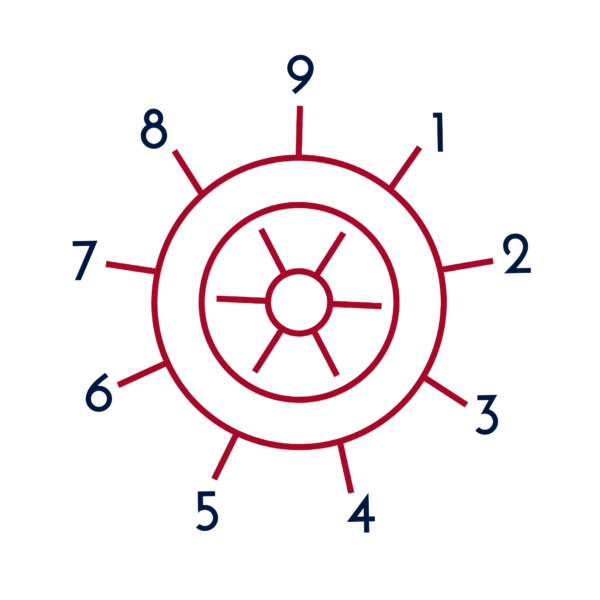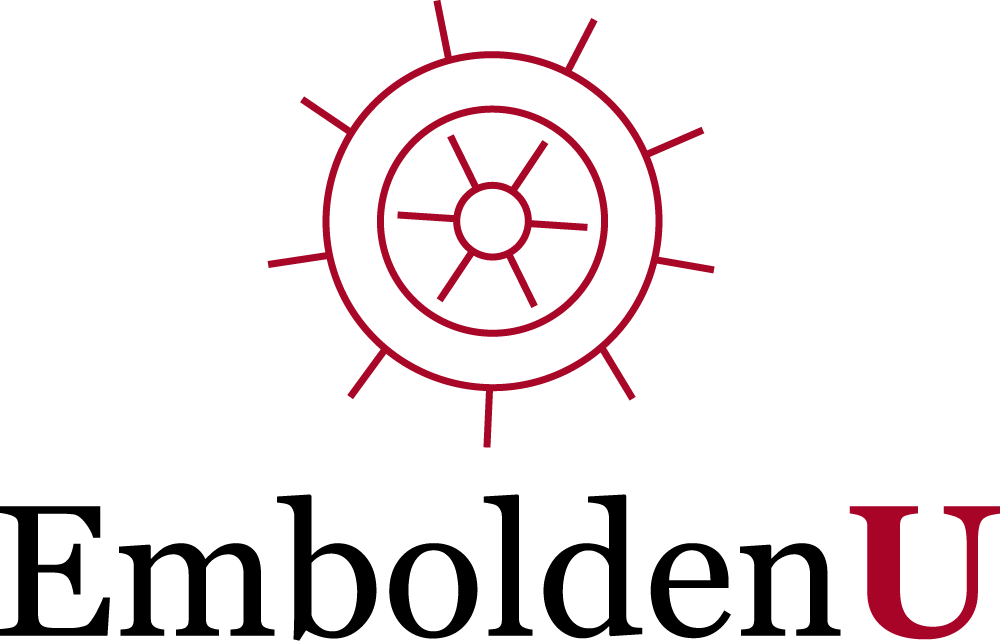
Enneagram Therapy & Coaching
Before becoming a professor of psychology and religion (1993), I had explored many forms of spirituality expressed in my religious tradition-of-origin (Catholicism). When I finished my formal studies I began looking into Eastern traditions.
In 2004, I was exposed to the psychological-spiritual wisdom tradition called Enneagram.
“The Enneagram of Personality Types” is a modern synthesis of a number of ancient wisdom traditions. This tool came to the United States in the 1970s by way of Oscar Ichazo (1931-2020) a Bolivian-born priest and Claudio Naranjo (1932-2019) a Chilean-born psychiatrist. Naranjo trained American scholars like psychologists Beatrice Chestnut, Don Riso and Russ Hudson among others. Many psychologists and spiritual teachers and even human resources departments have used Enneagram coaching to stoke authenticity, expose core motivations and strengths, and ultimately resolve interpersonal conflicts.
Learning about Enneagram from books and workshops has not been enough for me, I’ve gained so much more by working with well-respected teachers like Russ Hudson, Tom Condon, and Richard Rohr but my very favorite teacher is Dr. Beatrice Chestnut. Through years of study, teaching, and working with clients, I’ve come to prefer this powerful system for creative clarity.
“Psychology without spirituality is arid and ultimately meaningless, while spirituality without grounding in psychological work leads to vanity and illusions.”
– Russ Hudson and Don Riso, The Wisdom of the Enneagram
About the Enneagram

The Enneagram (pronounced “any-uh-gram”) figure is a circle inscribed by nine points. In Greek, ennea means “nine” and gramma means “message”. Each of the nine points portrays a distinctive personality style that has its own way of viewing, construing, and responding to people and events. Each style has both adaptive or resourceful and non-adaptive or non-resourceful cognitive, emotional, and behavioral strategies for self-maintenance and enhancement, for interpersonal relating, and for problem-solving.
Enneagram methods for clarity describe nine personality styles that people most favor when dealing with what challenges them.
Using Enneagram as a diagnostic tool enables us to look at our “lenses” instead of just looking through them. The Enneagram works like a psychological/spiritual lens check that helps us sort out the encouraging and discouraging voices in our heads. It helps us grasp our inner motivations and drives unique to our personality style. Strategies for change can be used from there.
EnneaPsychological Typing for Transformation
QUIZ HERE
Type 1: The Moral Perfectionist
Self-Image: I am diligent, accurate, thorough, in control, correct, responsible, just, and fair. Core Desire: to have integrity, to be right, virtuous, and “a genuinely good person” (not just seen as one). Core Weakness: Resentment – this anger may be repressed which leads to continual frustration and dissatisfaction with themselves, others, and the world. They often show a righteous demeanor. Core Fear: being corruptible, inappropriate, dishonest, wrong, bad. Theme: If I want it done right, I’ll be the one to do it.
Type 2: The Supportive Advisor
Self-Image: I am helpful, caring, warm, nurturing, altruistic, empathic, and always considerate. Core Desire: to be loved and desired. Core Weakness: Pride – unwilling to acknowledge one’s on suffering while attempting to “help” the suffering other. Giving almost always has strings attached. Core Fear: being worthless, needy, inconsequential, dispensable, or unlovable. Theme: I’m here to help.
Type 3: The Successful Achiever
Self-Image: I am the most successful person in the room, efficient, competent, focused, and productive. Enough about me, what do you think of me? Core Desire: to be admired, respected, and considered an asset to the team. Core Weakness: Deceit – they frequently believe the image they are selling to others through their accomplishments. They deceive themselves the most. Core Fear: failing, being incompetent, inefficient, exposed as worthless, unable to appear unsuccessful. Theme: If you want to get er done, put me on the team.
Type 4: The Romantic Individualist
Self-Image: I am rare, deep, intellectual, tasteful, intelligent, emotional, and private. There’s no one like me. Core Desire: to be unique, special, and authentic. Core Weakness: Envy – feeling that something is fundamentally missing in themselves. Envy leads them to feel that others possess qualities they lack. They frequently entirely miss the blessings in their life. Core Fear: being inadequate, emotionally cut off, plain, mundane, broken, defective, or being without significance. Theme: No one’s like me, no one’s like me, no one likes me.
Type 5: The Investigative Thinker
Self-Image: I am deeply intelligent, private, quiet, and knowledgeable (in my specialty). Core Desire: to be capable and competent. Core Weakness: Avarice – they feel they lack inner resources that too much interaction with others will lead to catastrophic depletion. This leads them to withhold themselves from contact with others. They hold onto their resources and minimize their needs. Core Fear: being ignorant, invaded, annihilation, incapable, enslaved to obligations placed on them. Theme: I’m almost ready to come out there, I just need to do one more bit of prep.
Type 6: The Loyal Guardian
Self-Image: I am prepared, dedicated, dutiful, loyal, hard-working, compliant, dutiful to trusted authorities. I’m provocative, witty, rebellious if I don’t trust you. Core Desire: to have security, guidance, assurance, and support. Core Weakness: Anxiety – constantly scanning and preparing for the worse case scenarios. Core Fear: being without support or guidance, being alone, blamed, targeted, or physically abandoned. Theme: We can never be too prepared!
Type 7: The Entertaining Optimist
Self-Image: I am creative, fun, visionary, imaginative, stylish, playful, and inspirational. Core Desire: to be happy, satisfied, and content. Core Weakness: Gluttony – insatiable desire to “fill up” with experiences and stimulation. To avoid emotional pain, they pursue a variety of positive, stimulating ideas, and activities. They are never completely satisfied. Core Fear: being trapped in emotional pain, being deprived, limited, bored, or missing out on something exciting. Theme: Let’s jump; I’d rather ask for forgiveness than ask for permission!
Type 8: The Protective Challenger
Self-Image: I’m outspoken, direct, assertive, opinionated, decisive, bold, tough, able to stand up to injustice, and compassionate. Core Desire: to protect oneself, my autonomy. Core Weakness: Excess – a constant need for intensity, control and asserting their will. Core Fear: being powerless, weak, under somebody’s thumb, controlled, manipulated and at the mercy of injustice. Theme: No one’s the boss of me!
Type 9: The Peaceful Mediator
Self-Image: I’m easy going, kind, a good listener, agreeable, quiet, patient, calm, steady, and enduring. Core Desire: to have inner stability and peace of mind. Core Weakness: Sloth – desire to be unaffected by life. Resist bringing their authentic selves into view to themselves and others. They have a refusal to be fully awake and engaged. Core Fear: being drawn into conflict, loveless, shut out, overlooked, inharmonious. Theme: Can’t we all just get along?
How is the Enneagram used in Therapy & Coaching?
Identifying Patterns
This can be the beginning of learning about your particular EnneaStyle – your way of seeing and being in the world – affects all your relationships, including the one you have with yourself. With my guidance, we’ll tease out patterns that help you identify what makes you thrive and what gets in the way.
Tom Condon, one of my favorite teachers of Enneagram, considers Enneagram personality styles to be like nationalities. He writes, “While we are all unique individuals, we belong to a larger group of which we are individual examples. If you have friends from other cultures, you know that on one level you are very aware of the differences between their culture and yours. The fact may contribute much to your relationship. On other levels, you and your friends connect affectionately in a way that bypasses how your cultures make you different.”
We all know that no culture or nationality is superior to any other, but communicating skillfully with each other takes some training in sensitivity, learning about ourselves and others, and curiosity about how to find skillful ways of relating to our differences. But, just like cultural identity, we are all human and therefore have more things in common at our core.


Discovering our Blind Spots
No matter which mask we use (always an unconscious choice), it’s worn to feel safe in relationship.
Believe it or not, more people than not are disinterested in looking past their own cultural biases. Most resist examining what’s beneath the mask of our cozy identity? We think we are who and how we present ourselves to be. One of my Enneagram teachers I’ve yet to meet in person, Richard Rohr, says, “We, in America, especially, are addicted to our cultural identity and can’t seem to see our righteous attachment. We wear these blinders to our demise.”
Until we begin to identify our primary style of seeing, we won’t grow and change. We won’t break out of our cocoon of comfort. Logically, if we don’t know we are asleep, we won’t taste the satisfaction of waking up to the truth of our being.
More often than not, though, we won’t begin this excavation of our authentic selves — beneath the mask of our EnneaStyle — until the second half of life.
Waking up to Ourselves
Why do we wait so long to wake up? Because suffering from a major loss usually happens later in life, after we are over 35. For example, we might lose a parent, a job, a life partner, a home, a relative, or something else we’ve thought we needed to feel happy and safe in the world. As I said above, we most often lean into our EnneaStyle when we feel vulnerable. The more vulnerable, the more likely we will hide behind our EnneaStyle, our particular strategy for feeling safe.
Like an actor, our identity or EnneaStyle had a beginning. This performance rose up at our earliest loss in childhood. This story of loss and our coping method to prevent emotional overwhelm is formed even before we had the capacity to think critically (i.e., before age two or three). At some point in our family system, we solved our emotional fragility with one of these nine unconscious styles and our particular style, like our eye color, won’t change drastically but our unique style can grow and change. We just need to learn methods that keep us clear.
Ennea-Style like our eye color never changes drastically. Enneagram studies allow us to see our blinders. They help us catch ourselves in the act of relying on our defensive strategies just in time to import other methods. We don’t just see it and then STOP IT. That assumes we can turn off our fears with thoughts we throw at them.
What helps you work through what hinders and what supports your progress? I’ve found transformation isn’t possible through any one formula even if it leads to great insights; I need support for greater confidence and creativity. Using the Enneagram in therapy and coaching allows you to understand yourself at a deeper level, uncover subconscious beliefs, and become the best version of yourself.



